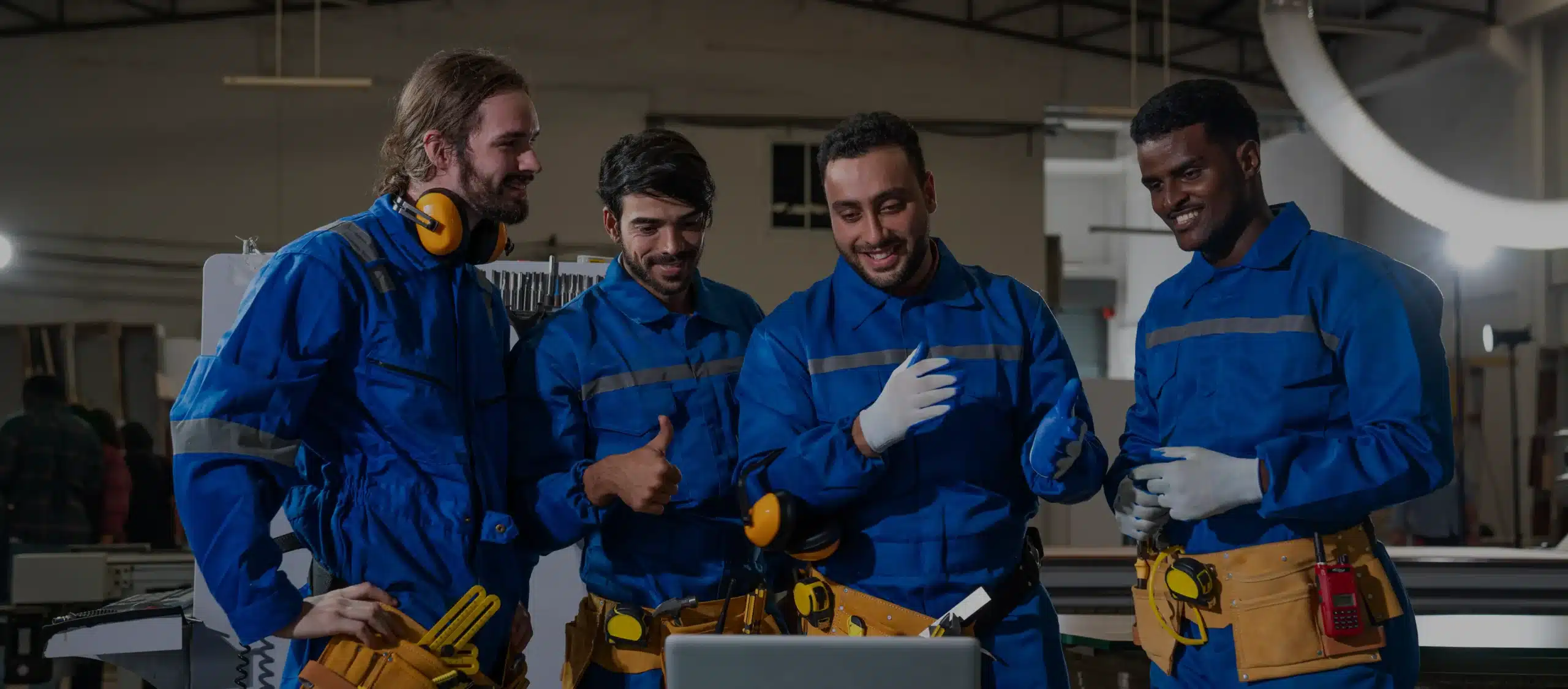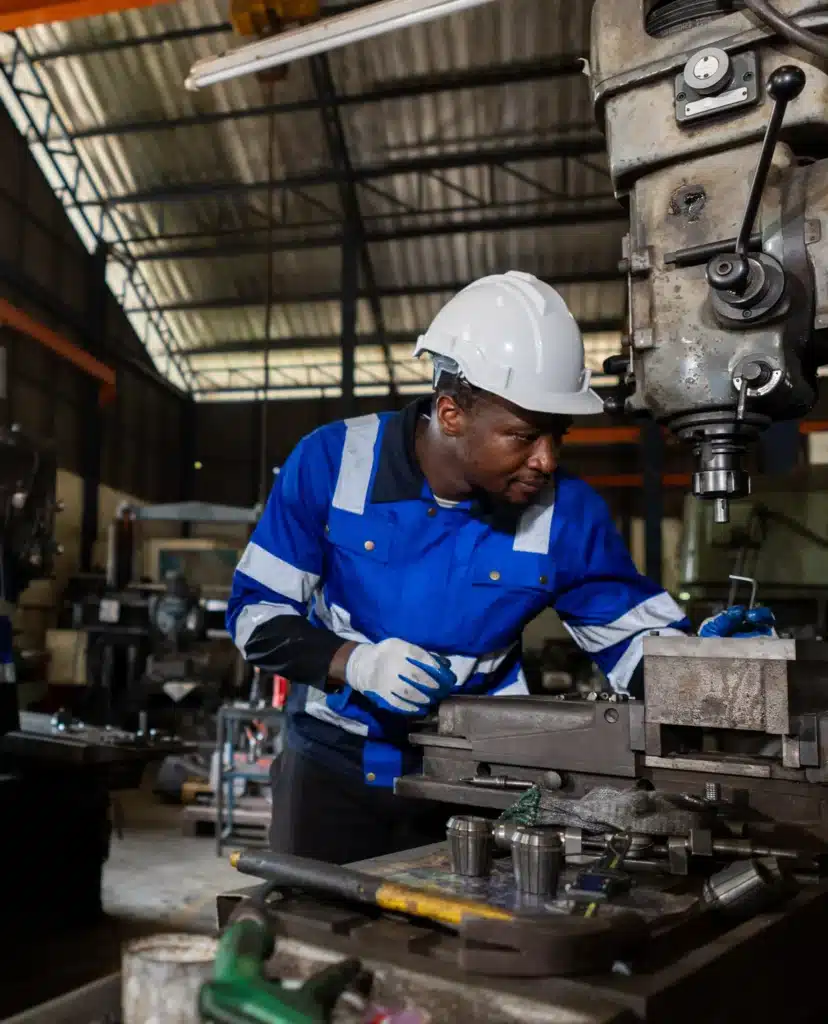The Hidden Cost of Hard Work: How Do Blue-Collar Jobs Lead to Disability?
The workers who keep America running with physical labor often face the greatest risks on the job. Workers in the construction, transportation, and manufacturing industries suffered over 749,000 nonfatal work injuries nationwide in 2023. These types of blue-collar jobs require long hours of physical labor, which can wear down the body over time and expose workers to life-threatening hazards.
Understanding the Risks of Blue-Collar Jobs

Blue-collar jobs are those that rely on physical labor rather than desk work. They include industries such as construction, mining, trucking, agriculture, warehousing, and manufacturing. These roles keep the nation’s infrastructure and supply chains moving, but also place significant strain on the body.
Workers in these industries lift heavy loads, operate dangerous machinery, and perform repetitive tasks that can wear down the body’s tissues. Many are also exposed to chemicals or dust that contribute to chronic illness.
Federal data from 2023 highlights just how common those risks are. Transportation and warehousing had the highest rate of work injuries and illnesses. Arts, entertainment, and recreation ranked second, followed by agriculture, forestry, fishing, and hunting.
The Most Common Disabilities in Blue-Collar Work
The injuries and illnesses that affect laborers can result from sudden accidents or develop gradually from years of strain or exposure. Three types of disabilities disproportionately affect blue-collar workers: musculoskeletal disorders, respiratory conditions, and cardiovascular diseases.

Musculoskeletal Disorders
Injuries to the back, neck, and joints are among the leading causes of disability for physical laborers. A large review of workplace studies found that a significant share of blue-collar workers reported experiencing musculoskeletal problems within a single year:
- Back problems: 60% of workers
- Neck problems: 51% of workers
- Shoulder problems: 50% of workers
- Lower back problems: 47% of workers
- Wrist problems: 42% of workers
For construction and manufacturing workers, repetitive lifting, bending, and twisting can gradually wear down muscles and connective tissue, leading to potential long-term health issues. Many truck drivers also suffer chronic pain and gradual musculoskeletal disability from years of sitting behind the wheel for long hours.
Respiratory Conditions
Jobs that involve exposure to fumes, dust, or chemicals can have a lasting, detrimental impact on the lungs. Blue-collar workers such as farm workers, factory employees, and miners often spend years breathing in harmful particles that increase their risk of respiratory diseases. Around 15% of chronic obstructive pulmonary disease, or COPD, cases in the general population are linked to workplace exposures, such as dust and chemical vapors.
Asthma and chronic bronchitis can also result from occupational exposure. In miners, exposure to coal dust can cause pneumoconiosis, more commonly known as black lung disease. One study found evidence of black lung disease in more than 10% of coal miners with 25 or more years on the job—and in Central Appalachia, that rate rose to 21%.
Cardiovascular Disease
Blue-collar jobs also take a toll on the heart. Long shifts, irregular schedules, and high stress create conditions that contribute to hypertension and heart disease. In fact, research estimates that work is linked to up to 20% of cardiovascular disease deaths in working-age populations.
Truck drivers and shift workers are especially susceptible to these risks. The combination of poor sleep, long hours, and limited access to healthy food makes cardiovascular disease one of the most disabling outcomes of all.
The Industries With the Highest Disability Risk
- Transportation and warehousing: 4.5 per 100 full-time workers
- Arts, entertainment, and recreation: 4.3 per 100 full-time workers
- Agriculture, forestry, fishing, and hunting: 4.2 per 100 full-time workers
- Health care and social assistance: 3.6 per 100 full-time workers
- Retail trade: 3.1 per 100 full-time workers
- Manufacturing: 2.8 per 100 full-time workers
- Accommodation and food services: 2.7 per 100 full-time workers
- Construction: 2.3 per 100 full-time workers
- Wholesale trade: 2.3 per 100 full-time workers
- Utilities: 1.8 per 100 full-time workers
- Administrative and support and waste management and remediation services: 1.8 per 100 full-time workers
- Educational services: 1.7 per 100 full-time workers
- Mining, quarrying, and oil and gas extraction: 1.3 per 100 full-time workers
These figures highlight the kinds of work most likely to result in disability. For example, warehouse staff face ergonomic injuries from repetitive lifting, while farm workers risk accidents involving heavy machinery. Construction crew members may fall from scaffolding, and miners are vulnerable to lung disease.
The Long-Term Impact of Workplace Disability
A work-related disability means lost income and higher expenses. Research has found that job-related factors, such as long hours, night shifts, and high stress, account for 5% to 8% of health care costs in the United States.
Families often feel the strain. A spouse may need to work more hours, or children may need to take on additional responsibilities at home. Stress over money and caregiving can significantly reduce the entire household’s quality of life.
Many blue-collar workers rely on Social Security Disability Insurance, or SSDI, when they can no longer earn a paycheck. One study found that workers in blue-collar and service jobs are much more likely to apply for SSDI and be approved for disability benefits compared to white-collar workers.

Preventing Disability in Blue-Collar Work
Many of the health problems associated with blue-collar occupations can be reduced with proper prevention measures. Both employers and workers play a role in reducing the risks.
Basic steps include providing ergonomic tools and training, providing protective equipment and ensuring its use, and scheduling regular breaks during heavy or repetitive tasks. Health screenings, especially for lung and heart conditions, can also catch problems before they become disabling.
Large-scale safety gains often come from programs led by the Occupational Safety and Health Administration, or OSHA. Its National Emphasis Programs target particular hazards in high-risk industries, while its Safe + Sound Campaign encourages employers to adopt proactive safety and health programs. Additionally, OSHA’s Whistleblower Protection Program aims to encourage workers to report unsafe practices without fear of retaliation.

Navigating Support Systems
When a health condition interferes with a worker’s ability to keep working, two main systems can provide support: workers’ compensation and SSDI.
- Workers’ compensation is a form of employer-provided insurance that covers medical expenses and partial wage replacement for employees injured on the job. Injured employees have the right to seek this compensation no matter who’s at fault.
- SSDI is a federal program for individuals who can no longer work due to a disabling condition, regardless of whether the disability was caused or aggravated by their job. To qualify, you must have worked and paid into Social Security long enough and meet the agency’s definition of disability.
Resources are available to guide workers through these systems. The Social Security Administration publishes detailed guidance on eligibility criteria and the application process, while state laws govern workers’ compensation eligibility and claims procedures. Advocacy organizations, such as the National Disability Alliance, help individuals with disabilities secure the Social Security benefits they’ve earned.
High-Risk Jobs Can Have Lasting Impacts
The most hazardous jobs in America are often those that involve the most demanding physical labor. The construction, trucking, manufacturing, and agriculture industries all expose workers to serious risks that can lead to lasting health problems. The common disabilities from manual labor include chronic back pain, lung disease, and heart conditions—each of which can end a career and force workers to rely on SSDI benefits.
Disability changes everything, from finances to health to family life. The best way forward is to prioritize the health of workers by valuing their well-being.
